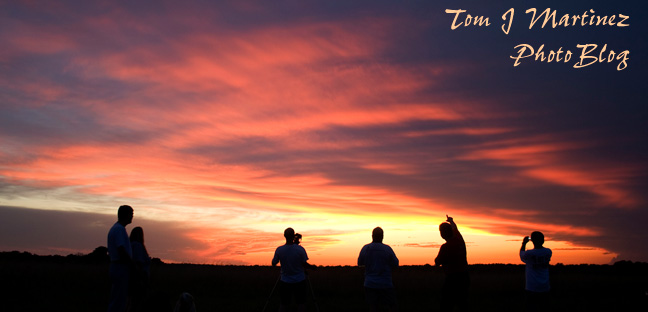Click on the Image for a Larger View
Star trails are easy to take with your digital camera, but before I tell you how I created the above image, a few things about the picture. The image is a 5.5 hour long exposure of the northern sky centered at the "north celestial pole" of the Earth. As we rotate with the Earth during the night, the stars seemingly rotate counter-clockwise. They rotate in smaller circles around a point near the "North Star". This point is the axis of the Earth extended to the sky and is called the north celestial pole. Also notice that the North Star is not exactly at this point. The red glow centered above the tree line is the light pollution glow from Kansas City, about 50 miles away. The brighter white glow on the left is from the La Cygne power plant, about 5 miles distance.
The image is NOT one long exposure, but a combination of eighty one, 4 minute shots. I started the first exposure at 10:54 p.m. and the last exposure ended 5 hours, 30 minutes later, just after atronomical twilight at 4:24 a.m. All taken with my 10-22mm wide-angle lens set to 10mm on my Canon XTi digital.
A little bit of forethought is required to take a shot like this. You can take one long shot, but if you do, you are more likely to get a very bright, over exposed picture. It is better to take shorter exposures and combine them later. This is what I did:
- Before dark, I put the camera on a tripod. I replaced the camera's battery with its AC-power adapter (I didn't want the battery to run out of power in the middle of the shots).
- I set the lens at its widest view, 10mm. I then auto-focused the lens on the distant horizon. I turned off the auto-focus switch (you don't want to use the auto-focus feature because the stars are too dim for the lens to focus on). Being careful not to bump the focus setting. I then set the shooting mode to M (Manual) and dialed the shutter speed to Bulb.
- Once it got dark, I composed the picture by taking a few test shots. I settled on individual 4 minute shots, with the lens set at f/4 and the camera at ISO 400. A little bit of math told me that I would need about 75 shots for the 5 hours of darkness. I used a "timer remote controller", setting the remote to take 99 shots, each shot set at 4 minutes with a 2 second interval between shots to allow each image to be saved to the memory card. I pressed the Start button on the timer and walked away.
Now comes the easy part, combining all eighty one pictures. How can that be easy, you might be saying? It is easy because someone has created a program that does it all automatically. Achim Schaller, from Germany, created the program and it is "Free". Here is the website: http://www.startrails.de/html/software.html All you do is load the images, press a button, and in a few minutes it is done. It's supposed to create a video also, but I couldn't get it to work.
Click on the Image for a Larger View
Above are the first and last frames from the eighty one images. You can see how much the sky has rotated in 5.5 hours




Tom,
ReplyDeleteI presume the white glow to the left bottom is the La Cygne Power station, and the orange glow to the right bottom is KC?
Great image work as always.
Steve